Grow 15 Herbs
for the Kitchen
Sheryl L. Felty
The mission of Storey Publishing is to serve our customers by publishing practical information that encourages personal independence in harmony with the environment.
Illustrations by Charles Joslin
Cover design by Carol J. Jessop, Black Trout Design
1981 by Storey Publishing, LLC
All rights reserved. No part of this bulletin may be reproduced without written permission from the publisher, except by a reviewer who may quote brief passages or reproduce illustrations in a review with appropriate credits; nor may any part of this bulletin be reproduced, stored in a retrieval system, or transmitted in any form or by any means electronic, mechanical, photocopying, recording, or other without written permission from the publisher.
The information in this bulletin is true and complete to the best of our knowledge. All recommendations are made without guarantee on the part of the author or Storey Publishing. The author and publisher disclaim any liability in connection with the use of this information. For additional information please contact Storey Publishing, 210 MASS MoCA Way, North Adams, MA 01247.
Storey books and bulletins are available for special premium and promotional uses and for customized editions. For further information, please call 1-800-793-9396.
Printed in the United States by Excelsior
Felty, Sheryl L.
Grow 15 herbs for the kitchen / by Sheryl L. Felty
A Storey Publishing Bulletin, A-61
ISBN 978-0-88266-275-6
CONTENTS
Introduction
Herbs are the wonders of the culinary world. Most people can chop, dice, and saut, but the real craft of cooking comes from enhancing the flavors of your ingredients. Often that means cooking with herbs. But herbs do more than flavor food; they have medicinal uses, are companion plants, bee attractors, good scents, and dye plants. The best way to learn about using herbs is to grow your own.
Freshly picked herbs have a flavor far more precious and delicate than dried herbs. Dried, homegrown herbs are pure, unprocessed, and pungently flavored. Herbs and herb products make fantastic gifts; jars of delicious dill pickles, fancy mint jellies, sage cheese, or potted chives spice up any holiday. Sachets and herbal teas are also welcome gifts.
The best part of all this is that it is easy to do. Growing herbs takes only a small space around the home or apartment. If you do not have space outdoors, herbs are good candidates for container growing. A few pots on the kitchen windowsill green up many winter meals. And a little bit of time each week is all it takes to tend herbs.
This bulletin will tell you how to grow, preserve, and use the fifteen most popular kitchen herbs. Enjoy!
Sheryl L. Felty is a writer and researcher. A trained horticulturalist, she has been growing her own herbs for many years.
Plan Ahead
The best way to get your herb garden off to a good start is to plan it out on paper. Decide which type of herb, what variety, and how many of each you want to grow. If this is your first experience with herbs, start small and increase the size of your garden later. Here are some ideas to consider:
 Locate the short, compact herbs in the front of your herb bed; the taller varieties behind them.
Locate the short, compact herbs in the front of your herb bed; the taller varieties behind them.
 Give some thought to color combinations. You may choose to have a green and gray garden or to brighten it up with purple basil and flowering annuals.
Give some thought to color combinations. You may choose to have a green and gray garden or to brighten it up with purple basil and flowering annuals.
 Decide if you want to grow only perennials in one bed, or if you want to mix in annuals and biennials.
Decide if you want to grow only perennials in one bed, or if you want to mix in annuals and biennials.
 Repeat herb varieties for symmetrical patterns, or plant to create a wild look.
Repeat herb varieties for symmetrical patterns, or plant to create a wild look.
 If you are fortunate enough to have an old stone walkway or a slightly sloping terrace, you can easily create a splendid herb rock garden. Space large and small rocks in a pleasing pattern. Plant herbs so they cascade over and between the rocks.
If you are fortunate enough to have an old stone walkway or a slightly sloping terrace, you can easily create a splendid herb rock garden. Space large and small rocks in a pleasing pattern. Plant herbs so they cascade over and between the rocks.
 You can plant a traditional, sixteenth century knot garden, a beautifully sculptured arrangement. Plant three or four types of compact perennial herbs close together to make a low hedge knot. (See illustration.) Regular pruning is essential and much maintenance is required for this formal garden. Some herbs that lend themselves well to a knot garden are dwarf sage, lemon thyme, dwarf lavender, and winter savory.
You can plant a traditional, sixteenth century knot garden, a beautifully sculptured arrangement. Plant three or four types of compact perennial herbs close together to make a low hedge knot. (See illustration.) Regular pruning is essential and much maintenance is required for this formal garden. Some herbs that lend themselves well to a knot garden are dwarf sage, lemon thyme, dwarf lavender, and winter savory.
Raised Bed Gardens
Permanent, raised bed gardens are practical and attractive for herb growing. Raised beds stand eight to twelve inches above ground level. They guarantee better water drainage and warmer soil for the plants growing there. There are a wide number of materials you can use to contain the bed: bricks, cement blocks, stone, railroad ties, logs, or anything else that suits your fancy.

Knot garden.
It is best to make the bed four feet wide if you can reach across it from both sides. Make it three feet wide, if you have access from one side only. Make it as long or short as your space allows.
If you have a plentiful supply of fertile, loamy garden soil, use this to fill up the beds. If your soil is not the best, mix:
 1 part garden soil
1 part garden soil
 1 part sand
1 part sand
 1 part peat moss
1 part peat moss
 1 part compost
1 part compost
 lime
lime
and use this as your planting medium.
Plant on a raised bed garden the same as you would on ground level.
Essentials for Growing Herbs Outdoors
Herbs will prosper in most types of good garden soil, especially a fertile, well-drained, sandy loam. Since most herbs are native to the poorer, rocky soils of the Mediterranean, they are able to make a fine showing under less than optimum conditions. However, if you are considering a long-term perennial bed, it is advisable to make your soil the best possible.
Most soils benefit from the addition of organic matter such as compost, chopped leaves, or peat moss. Organic matter improves the texture of soil, making light or sandy soil more fertile and able to hold a greater amount of water and loosening heavy or clay soil.
Most herbs require well-drained soil (the exception being some types of mint). Well-drained means that water seeps down into the soil at a fairly constant rate, so there is never a pool of standing water on the soil surface resulting in soggy roots for the herbs. Do not plant in poorly drained areas unless you plan to build raised beds.
All soils should be tested before you start growing. The information you get from your soil test will give you a clear understanding of your soil and its needs. You can buy a soil test kit and do your own; or for a minimal cost, you can send your soil off to a soil testing lab for analysis. Your local county extension service agent will help you with this.



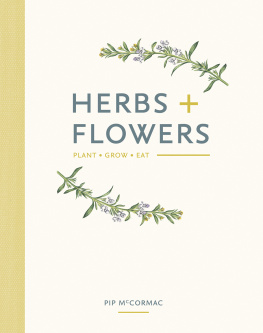
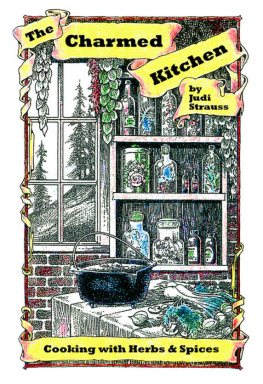

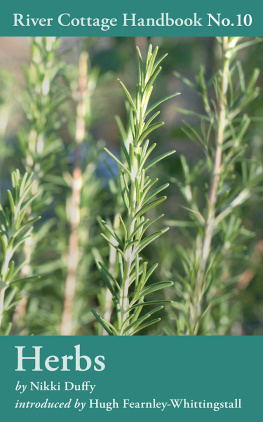
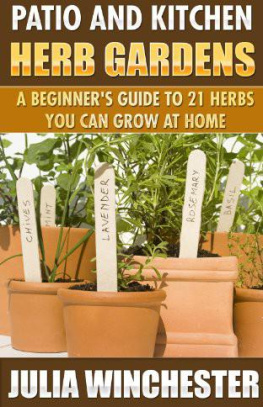
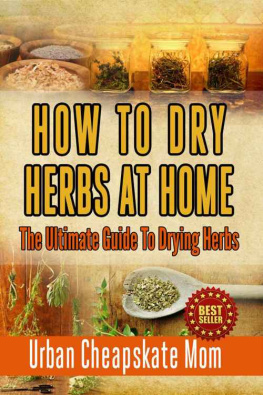
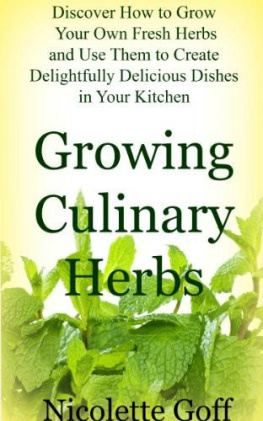
 Locate the short, compact herbs in the front of your herb bed; the taller varieties behind them.
Locate the short, compact herbs in the front of your herb bed; the taller varieties behind them.